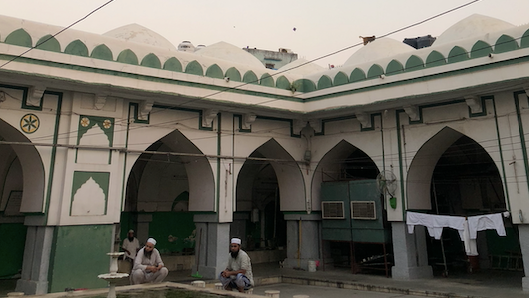From the bylanes of a congested neighbourhood of Shahjahanabad stands a living heritage, known as Kalan Masjid (Big Mosque). Later, it got refurbished with grey floor tiles, by replacing the black ones. Although today, no single patch of black can be seen as the mosque’s walls are painted and plastered with shades of green, blue, white and aquamarine.
Built in 1387 by Khan-i-Jahan Junan Shah — the son of the Prime minister of Firoz Shah Tughlaq, Khan-i-Jahan Tilangini, with an aim to secure a place in heaven and to please Allah, Juna Shah contrived this marvellous structure, making it one of the gems of Tughlaq Dynasty.
Standing at a height of 20 feet above from the ground in the Mohalla Qabristan near Turkman Gate, one can enter the mosque by climbing up a flight of about 31 steps and can notice two very prominent features about its architecture, that is, the absence of minarets, unlike the Mughal architecture, and the use of shallow domes.
Bishop Reginald Heber visited the mosque in 1824 and described the mosque as, “The Kala Masjid is small and has nothing but its plainness, solidity and great antiquity, being a work of first Patan conquerors, and belonging to the times of primitive Mussalman simplicity.
It is exactly on the plan if the original Arabian mosques, a small court, surrounded by a cloister, and roofed with many small domes of the plainest and most solid construction, like the rudest specimens of what we call the early Norman architecture.” Indeed, Kali Masjid is the epitome of simplicity and grace. From Ferozabad to Shahjahanabad to our very own Purani Delhi, Kali Masjid has come a long way
By: Maryam Khan




